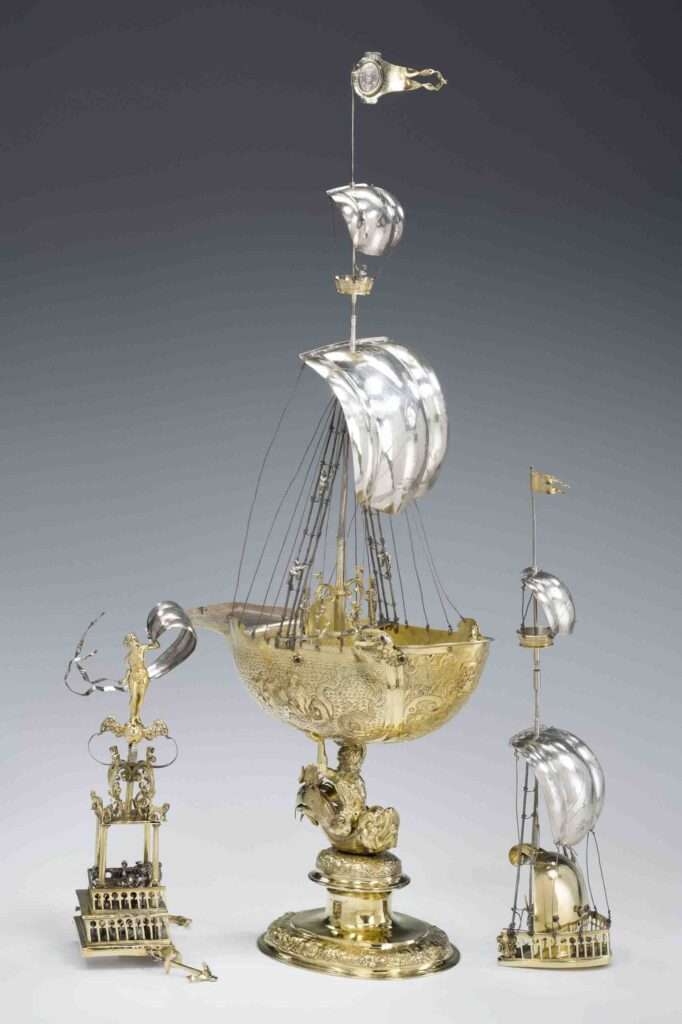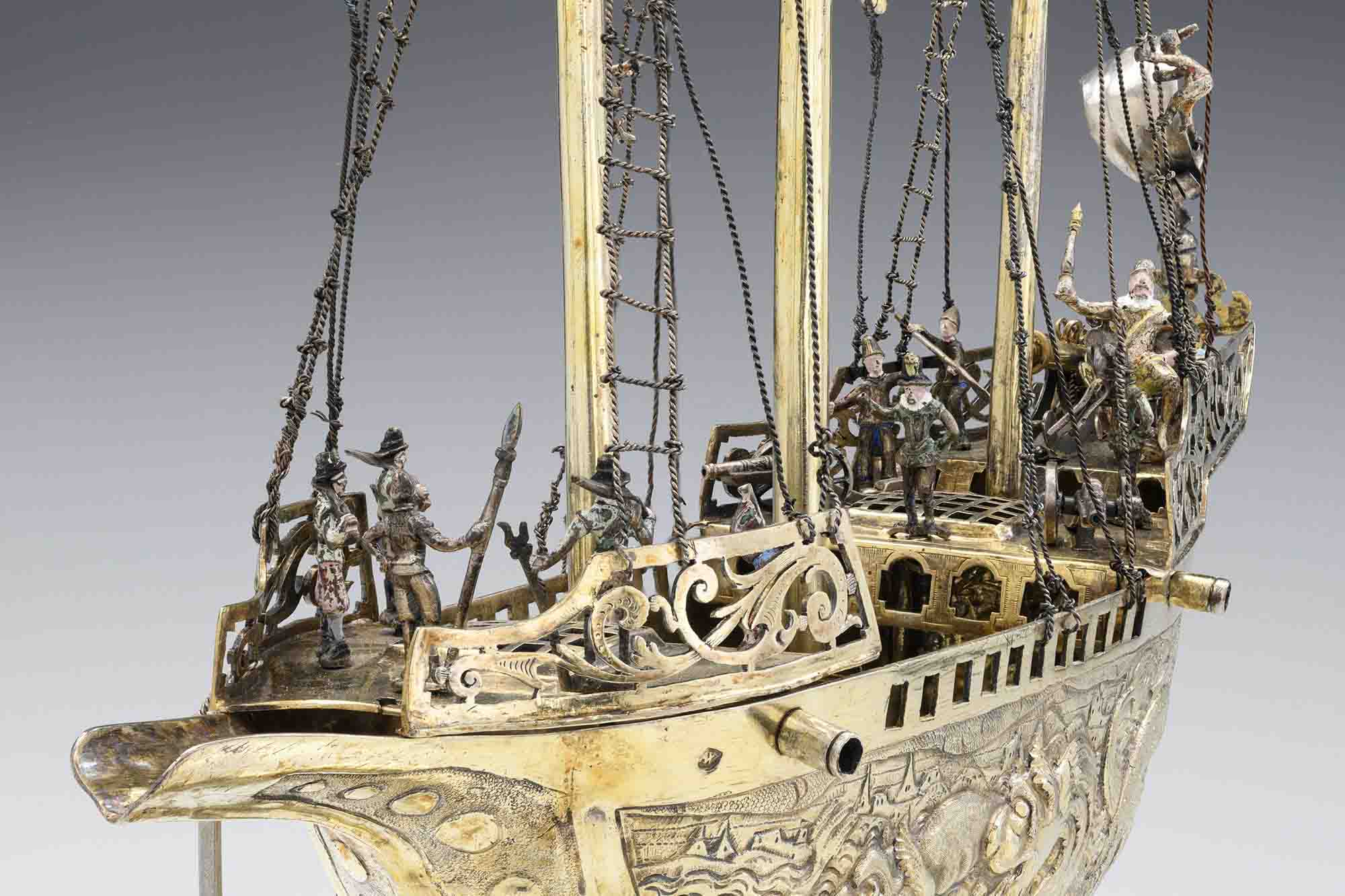Solid gold Renaissance ship-shaped drinking flasks complete with rigging and sailors have gone on show at a special exhibition in Germany.
The ornately decorated vessels were created by craftsmen in the 16th and 17th centuries as a fun way to celebrate maritime adventures.
Experts say that at the time, sea voyages were seen as a hugely exciting world of adventure and discovery.
And seafarers’ exotic tales of travels made them the rockstars of the era.
One was made in 1630 in the workshop of goldsmith Abraham Winterstein in Augsburg, Germany, and shows incredible detail like sailors standing on the ship’s deck.
Wine would be poured into the hull of the ship with its bow serving as a spout.


The golden ships have been gathered from collections all around Germany and Austria for an exhibition at the Bavarian National Museum which opened on 25th April.
A statement from the museum obtained by Newsflash said: “Ship-shaped drinking vessels and centrepieces are among the most extraordinary creations of Renaissance goldsmithing.
“Magnificently and richly detailed, they tell of courtly and patrician table culture as well as shipbuilding and seafaring in the early modern period.
“The exhibition looks at the 16th century and the diverse significance of ships during this time.”
They added: “They became icons of European technology and represented the daring of sailors in search of riches from distant worlds.
“At the same time, ships were also symbols and metaphors, for example for the church, the state, the path of human life or happiness.
“The exhibition shows a broad panorama of European seafaring and the importance of the Nuremberg and Augsburg goldsmith workshops in the 16th century.
“More than 100 great works of arts and crafts, as well as paintings, graphics, valuable manuscripts, maps and navigation instruments represent Bavarian art, culture and science history around 1600.”


The museum pointed out highlights of the show which had never been seen together before.
They said: “Highlights include the ship’s cup by the Augsburg master Caspar Hentz, a permanent loan from the Ludwig Maximilian University of Munich to the Bavarian National Museum, and its counterpart from the council silver of the city of Emden, the two ships with nautilus shells from the Green Vault, the precious portolan chart from the university library of the LMU Munich and a recently restored and previously never shown tapestry with a ship’s emblem from the Bavarian National Museum”
The display runs until 1st September.
To find out more about the author, editor or agency that supplied this story – please click below.
Story By: Joseph Golder, Sub-Editor: Joseph Golder, Agency: Newsflash
The Ananova page is created by and dedicated to professional, independent freelance journalists. It is a place for us to showcase our work. When our news is sold to our media partners, we will include the link here.




